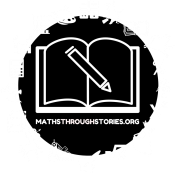Drawing from their research article, titled ‘Preferences for tactile and narrative counting books across parents with different education levels’ which is published in Early Childhood Research Quarterly, Shannon Gaylord (Carolina Outreach), Connor O’Rear (Purdue University), Caroline Hornburg (Virginia Tech) and Nicole McNeil (University of Notre Dame) have put together this short and easy to read blog post for interested teachers and parents. We hope you will find this blog interesting and share it on social media.
Counting books
Counting books are a good tool for teaching children early mathematics concepts, such as one-to-one correspondence, cardinality, and addition. Parents have a lot of options when it comes to choosing which counting books to read with their children. The books available on the market vary in a number of ways, such as how the set sizes are represented in the text, the level of distraction on the page, the complexity of the math talk in the text, and much more (Powell & Nurnberger-Haag, 2015; Ward et al., 2017). How do parents choose among these? Determining the types of books parents prefer is important because parents are gatekeepers for the books that come into children’s homes, and a given counting book can only provide a child with the opportunity to engage in math talk and learn early mathematics concepts if it is read (and re-read).
Our study
To gain a better understanding of how parents choose counting books for their children, we administered a survey to roughly seven hundred parents of children between two-and-a-half and four years old (Gaylord et al., 2020). Our initial predictions were that parents of boys may prefer counting books that include tactile features (i.e., books with a touch-and-feel component), whereas parents of girls may prefer books that include a narrative. We also suspected that parents’ education level may influence the books parents choose to read with their children, given previous studies suggesting a link between parents’ education level and the activities parents choose to participate in with their children (Stipek et al., 1992).
To determine which features parents preferred, we asked a series of forced-choice and open-ended questions. For the two sets of forced-choice questions, parents saw two different counting books and were asked which one they would prefer to read with their child and why. Unbeknownst to parents, one of the pairs pit a book with tactile counting features against a book without tactile counting features. The other pair pit a counting book with a narrative against a counting book without a narrative. For the forced-choice questions, the books that were presented were randomly selected from a larger set of ten possible books for that category (e.g., a given parent saw one of ten possible tactile books pitted against one of ten possible non-tactile books). By randomizing which books parents saw across a larger set of books that shared the same feature, our results are not tied to any one book, but are more likely to be representative of the feature more broadly. We also asked parents to rate, in general, how important four different factors were whenever they choose a counting book to read with their child: enjoyment, challenge, tactility, and presence of a narrative.
Overall, we did not find evidence of any consistent associations between preferences for certain features and child gender, but we did find an association between parent education level and their choice of counting book. When asked to select a counting book either with tactile features or without tactile features, parents with lower education levels were more likely to both pick a book with tactile features and mention the tactile features of the book when justifying their selection. Parents with a graduate-level education rated tactility as less important when considering counting books than parents with a bachelor’s degree or less. When asked to select a counting book either with a narrative or without a narrative, parents with higher education levels were more likely to both pick a narrative book and mention the narrative when justifying their selection. Parents with at least a bachelor’s degree also rated the level of challenge of the counting book as a more important factor than parents with less than a bachelor’s degree. Overall, parents of all education levels reported that enjoyment was the most important factor when selecting which counting book to read. Across these questions, it is clear that parents are picking books they think their children will enjoy, but it is also apparent that parents from different education backgrounds take different approaches to deciding which counting books they want to read with their children.
What else do parents consider?
A follow-up examination of the open-ended responses further indicated the factors affecting parents’ book choices (O’Rear et al., 2019). In general, parents were more likely to pick a book based on the illustrations of the book (42.8% of parents) than on the mathematical content (24.1% of parents). Of the responses that mentioned mathematical aspects of the book, 77% mentioned whether or not it would be helpful for children’s counting, compared to 29% who mentioned the way the numbers were represented within the book (e.g., “provides various ways of visualizing the same number”).
Take-home points
Overall, these findings suggest that the math content of the book is not a driving factor in parents’ selection of counting books. Instead, parents value the perceived enjoyment of the book and the book’s illustrations. Moreover, parents from different backgrounds differ in what they view as important in selecting counting books. Research has shown that counting book reading can promote children’s conceptual understanding of counting (Gibson et al., 2020; Mix et al., 2012; O’Rear & McNeil, 2019; Petersen et al., 2014). An important next step is to determine how best to design counting books to elicit a focus on the important mathematics concepts within the book in a way that parents and children find appealing.
References
Gaylord, S. M., O’Rear, C. D., Hornburg, C. B., & McNeil, N. M. (2020). Preferences for tactile and narrative counting books across parents with different education levels. Early Childhood Research Quarterly, 50, 29-39. https://doi.org/10.1016/j.ecresq.2018.07.010
Gibson, D. J., Gunderson, E. A., & Levine, S. C. (2020). Causal Effects of Parent Number Talk on Preschoolers’ Number Knowledge. Child Development. https://doi.org/10.1111/cdev.13423
Mix, K. S., Sandhofer, C. M., Moore, J. A., & Russell, C. (2012). Acquisition of the cardinal word principle: The role of input. Early Childhood Research Quarterly, 27(2), 274-283. https://doi.org/10.1016/j.ecresq.2011.10.003.
O’Rear, C. D., & McNeil, N. M. (2019). Improved set-size labeling mediates the effect of a counting intervention on children’s understanding of cardinality. Developmental Science, 22, e12819. https://doi.org/10.1111/desc.12819
O’Rear, C. D., Gaylord, S. M., Hornburg, C. B., & McNeil, N. M. (2019, March). Features that Affect Parents’ Preferences for Different Counting Books [Poster presentation]. Biennial Meeting of the Society for Research in Child Development (SRCD), Baltimore, MD.
Petersen, L., McNeil, N., Tollaksen, A., Boehm, A., Hall, C., Carrazza, C., & Devlin, B. (2014). Counting practice with pictures, but not objects, improves children’s understanding of cardinality. Proceedings of the 36th Annual Meeting of the Cognitive Science Society, 2633-2638. Quebec City, Canada.
Powell, S. R., & Nurnberger-Haag, J. (2015). Everybody counts, but usually just to 10! A systematic analysis of number representations in children’s books. Early Education and Development, 26, 377-398. https://doi.org/10.1080/10409289.2015.994466
Stipek, D., Milburn, S., Clements, D., & Daniels, D. H. (1992). Parents' beliefs about appropriate education for young children. Journal of Applied Developmental Psychology, 13, 293-310. https://doi.org/10.1016/0193-3973(92)90034-F.
Ward, J. M., Mazzocco, M. M., Bock, A. M., & Prokes, N. A. (2017). Are content and structural features of counting books aligned with research on numeracy development? Early Childhood Research Quarterly, 39, 47-63. https://doi.org/10.1016/j.ecresq.2016.10.002.
About the authors
|
Shannon M. Gaylord, LCSWA, LCASA, is a clinical social worker and addiction specialist working as an outpatient therapist at a community mental health agency, Carolina Outreach. She works with diverse and marginalized populations and specializes in working with clients with borderline personality disorder through dialectical behavior therapy (DBT). She completed this research as a student at the University of Notre Dame and continued developing this work after graduation.
|
|
Connor D. O’Rear is a postdoctoral researcher in Human Development and Family Studies at Purdue University. His research looks at how children develop foundational math skills as well as how parents and teachers structure children’s early learning environment. The ultimate goal of this work is to identify the best ways to bridge research and practice to promote children’s early learning.
|
|
Caroline Byrd Hornburg is an assistant professor of Human Development and Family Science at Virginia Tech, and director of the Learning and Development Lab. Her research program focuses on children’s learning, primarily in the domain of mathematics, from PreK to 6th grade. She focuses on skills that are foundational for understanding of later math concepts, as data on early skills can provide insight into identification of children at risk for later difficulties. Her research also provides a framework for optimal design of interventions to improve children’s understanding.
|
|
Nicole M. McNeil is a professor in the Department of Psychology and a fellow of the Institute of Educational Initiatives at the University of Notre Dame. She also directs the interdisciplinary minor in Education, Schooling, and Society and the Cognition Learning and Development Lab at Notre Dame. She studies learning and cognitive development, with a focus on mathematical cognition, symbolic understanding, quantitative reasoning, and problem solving. She is interested in theoretical issues related to the construction and organization of knowledge, as well as practical issues related to learning and instruction in formal and informal environments.
|





